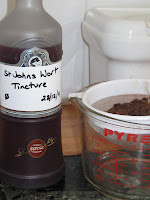


Yesterday we celebrated Nerys' life with friends and flowers, laughter and tears, with music and poetry, candles and song, the fragrance of herbs and her favourite essential oils. Her strength and beauty shone, mirrored in the faces of her family, her joy for life in the dancing of her grand daughters and her love for all in the rich variety of her many friends gathered together.
Nerys would be thrilled to know my new grandson, Luke, arrived yesterday and that twin lambs were born at Summertime Farm this morning. So moves the circle of life.
Nerys would be thrilled to know my new grandson, Luke, arrived yesterday and that twin lambs were born at Summertime Farm this morning. So moves the circle of life.
with love,









